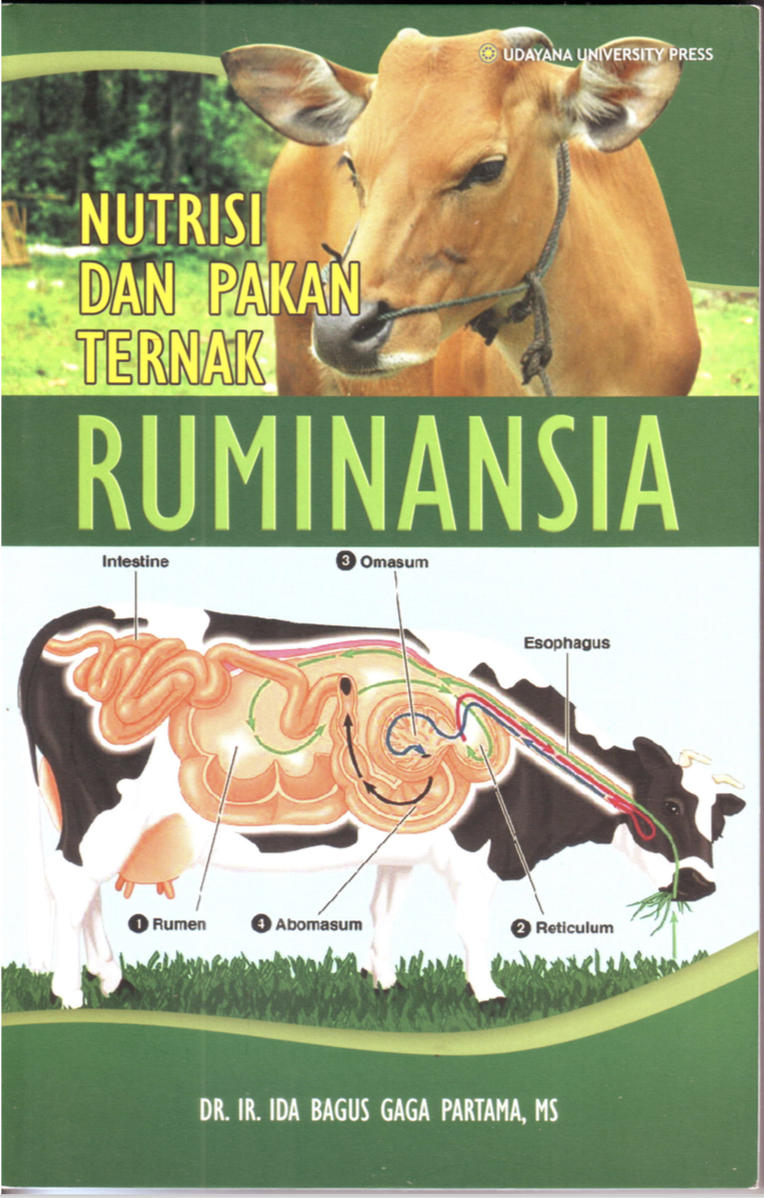
NUTRITION AND FEED RUMINANTS
IDA BAGUS GAGA PARTAMA
ISBN : ISBN: 978-602-7776-59-3 Published : 2013
Abstrak
NUTRITION AND FEED RUMINANTS
The extensive development of ruminant livestock is very not possible, because it will be required ample land. For that, it is necessary to know the nutrients for the ruminants. Nutritional science is a science that studies the selection and consumption of feed, as well as the utilization of food substances to maintain the sustainability of life and the integrity of body organs (the renewal of body cells that are "worn" or used) and to fulfill the purpose of livestock production.
The main task of nutritional sciences is to learn how the body acquires the nutrients it needs. The need for food substances to maintain the sustainability of life and organ integrity is called the need for basic life (maintenance requirement).
As with humans, cattle also need complete nutrition. The more variety of raw materials used in stacking rations, the better the quality of the rations. Livestock that are given rations containing vegetable and animal raw materials, will generally have a performance that is much better than livestock that only accept plant-based rations only. This can be explained by complementary nutrient deficiencies of one ingredient with other ingredients.
In this book, peeled the digestive system of ruminants and microbes that play a role in it, especially those that are befungsi to the degradation of fiber feed fermentatif in the rumen, and the type of feed given, so that the maximum productivity obtained ruminant. Ruminants have four stomach, namely reticulum, Rumen, Omasum, and abomasum. The digestive process of foodstuffs in the reticulum, rumen, and Omasum is performed by the rumen microbes (bacteria, fungi, and protozoa) that remodel the foodstuffs fermentatively, thus becoming another compound different from its original dietary substance molecule. Thus, this teaching material will be very useful and helpful in understanding about nutritional sciences for ruminants.
The main goal of the user of this teaching book is the undergraduate breeding students to support the subjects of "ruminant livestock Nutrition" as well as graduate students in the field of livestock and associated with it. In addition, this book will also be beneficial for those who are involved or at least interest in the field of livestock, especially ruminants, because in this book is also given some research and utilization of various kinds of waste, both with and without touch of technology.
